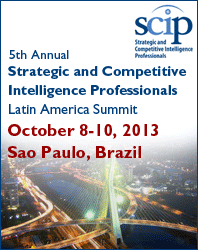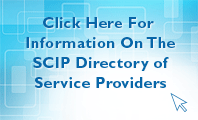POINT OF VIEW
Really, SWOT Analysis?

 |
| |
By Bonnie Hohhof
Director of Competitive Research
SCIP
|
|
The May “Fellows First Friday” question on the SCIP LinkedIn was posed by Babette Bensousan:
Why haven’t we progressed beyond SWOT as our primary analytical technique? While commenting that too many organizations use superficial shortcuts to aid management decision-making, Babette ends by asking the really key question: What do we need to do to meet good analysis requirements for high-quality competitive intelligence?
This discussion generated over 18,000 words of comments. If you have the opportunity, read through them to obtain the full flavor of the discussion. In the interim, here’s what I found to be the most interesting observations.
On SWOT and analysis:
- The quality of intelligence analysis finds its own equilibrium point in organizations. It's not that the profession has identified SWOT analysis as its standard, it's because SWOT is the level of competitive depth that many organizations find acceptable (i.e., the generic midpoint).
- The reason people haven't gone beyond SWOT is because they think it provides “the” answer. If you think you've got “the” answer, you stop looking for the best answer.
- There is not a “thing” called SWOT. It is a thinking framework.
- These models, SWOT and five forces, are organizing frameworks to help make sense of a complex world. They are not prescriptions.
- If SWOT leads to the identification of strategic risks or strategic opportunities, great. If it is used to reinforce blindspots, maybe not so great.
- When we know about strength, weakness, opportunity, and threat, what is next? SWOT should be expanded into the vision of “the next step."
- There is no one “correct” industry analysis, just as there is no one “best” model of the competitive environment.
- Competitive analysis is a continually refined process, rarely a finished product.
On analysis and decision-makers:
- Nearly any analytic protocol that captures the attention and focus of decision-makers can produce insights and intelligence.
- The “data” going into the model is often limited to the “tacit knowledge” that people around the table already have agreed upon.
- We need to account for egos and motivation, and be persuasive and smart about how we present our recommendations for action in that vein.
- Well-crafted intelligence and thoughtful analysis is useless if the decision-makers ignore it or can't understand it.
- We cannot look at our environment as if we weren't part of it. The very definition of what we look at impacts what we will find. You cannot create “good” competitive intelligence without starting by understanding who we are and what biases we hold.
- If people are not comfortable with change whether within or without they will stick to old paradigms and interpretations.
A seemingly inherent conflict in intelligence analysis is that it deals primarily with unstructured data — intelligence information does not come in neat columns and rows to be inserted in spreadsheets or matrices. Not only does that information come in a variety of forms, it is often wrong, incomplete, contradictory, or even deceptive. Thus if your analytical technique needs “clean” information to obtain good results that can withstand the challenges of your peers and clients, you put yourself at a disadvantage.
What resonated with me most in this LinkedIn discussion is the observation that good analysis is about critical thinking and having a firm understanding of how it is applied to develop judgments and conclusions. Like everyone else, intelligence analysts can be confident that they took the right path to reach their conclusions, and satisfied that they have done the right work to get there. But all analysts approach a project with specific mental models and key assumptions. They owe it to themselves and their clients to examine the perceptual and cognitive biases that can derail both the validity of their conclusions and prevent our clients from acting on our recommendations.
About the Author
Bonnie hhof is the Director of Competitive Intelligence at SCIP. Share your thoughts on this column via email
bhohhof@scip.org or by taking this brief
survey.
|
|
|
|
|
|
 |
|
|
|
|
|
|
|
|
|
|
|
|
|
|
|
|
|
|
|
|
|
|
|
|
 |
|
 |
| |
Upcoming themes slated for the
monthly SCIP Insight eBulletin below; choose a topic and
submit an article! |
|
|
|
|
July |
Key Intelligence Topics |
|
|
|
June |
Protecting Intellectual Property |
|
|
|
Sep |
Global CI Challenges |
|
|
|
|
|
|
|
|
 |
|
| |
The Strategic and Competitive Intelligence Professionals (SCIP)
merged with the non-profit Frost & Sullivan Institute in
2009. The partnership between Frost & Sullivan Institute and
SCIP provides a powerful opportunity to enhance the benefits
SCIP offers its members. |
|
|
|
|
|
|
| |
|









